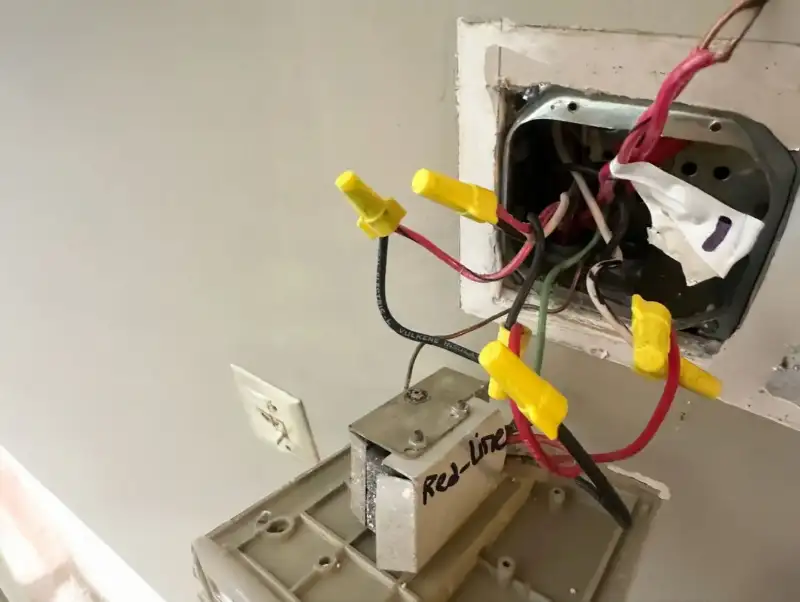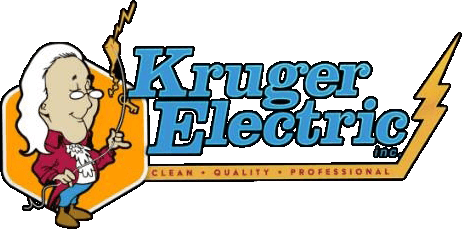
When it comes to ensuring the safety and reliability of your home’s electrical system, one of the most critical components to consider is the circuit breaker. This often-overlooked device plays a vital role in protecting your home from electrical fires and damage by interrupting the flow of electricity when it detects an overload or fault. However, just like any other part of your home, circuit breakers can wear out over time or suffer from faults that can compromise their ability to function effectively. That’s why regularly inspecting breakers is an essential practice for homeowners. This guide will explain why inspecting breakers is necessary, how to inspect a fuse box at home, and the common signs of a bad electrical breaker to watch out for.
Why Regular Inspections Are Essential for Circuit Breakers
The electrical panel, also known as the breaker box, is the central point for distributing electricity throughout your home. When a breaker trips, it disconnects the electrical flow to a circuit to prevent overheating, which could lead to fires or equipment damage. Over time, circuit breakers can degrade due to prolonged use, wear, or even physical damage. Regular inspections allow homeowners to catch potential issues before they become serious safety hazards. An unresponsive breaker or a faulty one can fail to protect your home in the event of an overload, putting your family and property at risk.
In addition to safety, regularly inspecting your breakers can also help with energy efficiency. If breakers are not functioning properly, they may lead to power surges or frequent tripping, which can cause unnecessary strain on your electrical system. A quick inspection and maintenance can ensure everything is working efficiently and effectively.
How to Inspect a Fuse Box at Home
Knowing how to inspect a fuse box at home is not only a valuable skill but a simple task that can prevent costly repairs and potential safety issues. Before starting any inspection, it’s important to turn off the main power supply to avoid electrical shock. Once the power is off, begin by opening the breaker panel, which may be located in your basement, garage, or utility room. The fuse box should be clearly labeled, and you should have an understanding of which circuits correspond to different areas of your home.
Next, visually inspect each breaker in the panel for signs of physical damage or wear. Look for any discoloration, cracks, or scorch marks, as these are indicators that a breaker has been exposed to excessive heat or electrical stress. If you notice any such damage, the breaker likely needs to be replaced. Additionally, check if any breakers are tripped or in the “off” position, which could suggest an overload or fault in the electrical system.
While doing the inspection, you should also check the connections. Loose or corroded connections can result in electrical faults, which may not be immediately visible but could lead to long-term problems. If any connections appear loose or damaged, they should be tightened or replaced by a professional electrician.
It is also a good idea to keep an eye on the breaker labels. Sometimes, the labels may not correspond accurately to their respective circuits, which could lead to confusion in case of a problem. Take the time to test each circuit and make sure the labels are correct and up to date. This simple action can save time and reduce errors when troubleshooting electrical issues in the future.
Signs of a Bad Electrical Breaker
Understanding the signs of a bad electrical breaker is crucial for homeowners who want to prevent costly repairs and potential electrical hazards. If you suspect that a breaker may be malfunctioning, there are several key signs to look out for. First and foremost, if a breaker repeatedly trips, it is likely a sign that it is worn out or defective. A circuit breaker is designed to trip if there is an overload or fault in the system. However, if it continues to trip under normal operating conditions, it may not be functioning properly, and replacement is necessary.
Another sign of a bad electrical breaker is if the breaker feels warm or hot to the touch. Breakers should remain cool, even when they are in use. If a breaker becomes hot, it suggests that it is working harder than it should, which could be due to a fault within the breaker itself or a problem with the circuit it controls. In either case, this is a serious issue that requires attention from a licensed electrician.
Visual signs are also important indicators of a malfunctioning breaker. As mentioned earlier, any visible damage, such as scorch marks, discoloration, or cracks in the breaker, suggests that the breaker has been exposed to electrical stress and may no longer function properly. If you notice any of these signs, it is best to replace the breaker to avoid further damage or safety risks.
Additionally, if you experience persistent electrical problems, such as lights flickering or outlets not working properly, this can also be a sign that there is an issue with the breaker. Flickering lights, especially when they are connected to specific circuits, may indicate that a breaker is not providing a stable electrical connection. Similarly, if outlets are not receiving power, the breaker may be faulty and unable to supply electricity to the circuit.
The Dangers of Ignoring a Faulty Breaker
Ignoring a faulty breaker can have serious consequences. In the worst-case scenario, a bad electrical breaker can lead to an electrical fire. Breakers are designed to trip in the event of an overload, but a malfunctioning breaker may fail to do so, allowing overheating to occur. Overheated wiring or electrical devices can catch fire, putting your home and family at significant risk.
Additionally, failing to inspect or replace a faulty breaker can lead to damage to your electrical appliances and devices. Overvoltage or power surges can cause electronics to burn out or become damaged, often leading to expensive replacements or repairs. Even if the damage is not immediately apparent, electrical surges can silently degrade the lifespan of your devices, causing them to fail prematurely.
Ignoring the problem can also lead to energy inefficiency. A malfunctioning breaker may cause circuits to trip repeatedly or work intermittently, which places unnecessary strain on your electrical system. This could result in higher energy bills or the need for more costly repairs down the line. Regularly inspecting breakers helps ensure that everything is running smoothly, preventing these potential issues from arising.
When to Call a Professional Electrician
While homeowners can inspect their breakers and fuse boxes for basic signs of damage or wear, certain issues require the expertise of a professional electrician. If you find any significant damage, such as a scorched breaker, exposed wiring, or an issue with the main electrical panel, it is crucial to contact an electrician right away. Attempting to fix these issues without proper knowledge and training could lead to further damage or pose safety risks.
Additionally, if you are unsure about how to perform an inspection or need help troubleshooting a recurring issue with a breaker, it is always a good idea to consult a licensed electrician. They have the tools and experience to safely inspect your electrical system and make any necessary repairs or replacements.
Lastly, if your electrical system is outdated or your home is more than 25 years old, it may be time for an electrical upgrade. Older electrical systems may not be equipped to handle the modern demands of today’s household, and an electrician can help determine if an upgrade is necessary for the safety and efficiency of your home.
Conclusion
Regularly inspecting your breakers is a simple yet effective way to ensure the safety and efficiency of your home’s electrical system. By understanding how to inspect a fuse box at home and recognizing the signs of a bad electrical breaker, you can prevent costly repairs, reduce safety risks, and improve the overall functioning of your electrical system. If you notice any signs of damage, overheating, or malfunctions, it is essential to address the issue promptly, either through DIY inspection or by calling a professional electrician. By staying proactive with electrical inspections, you can protect your home and enjoy peace of mind knowing that your electrical system is in good working order.
Need a Trusted Residential Electrician Near You?
At Kruger Electric Inc., we’ve proudly been serving our community for over 30 years with reliable and efficient electrical solutions. Whether you’re looking to upgrade your electrical panel, install smart switches, or need emergency services, our expert team is here to ensure your home is powered safely and effectively. We’re committed to providing top-notch service, and as a Better Business Bureau-affiliated company, we stand by the quality of every project we undertake. Reach out to us today, and let’s work together to keep your home running smoothly!
